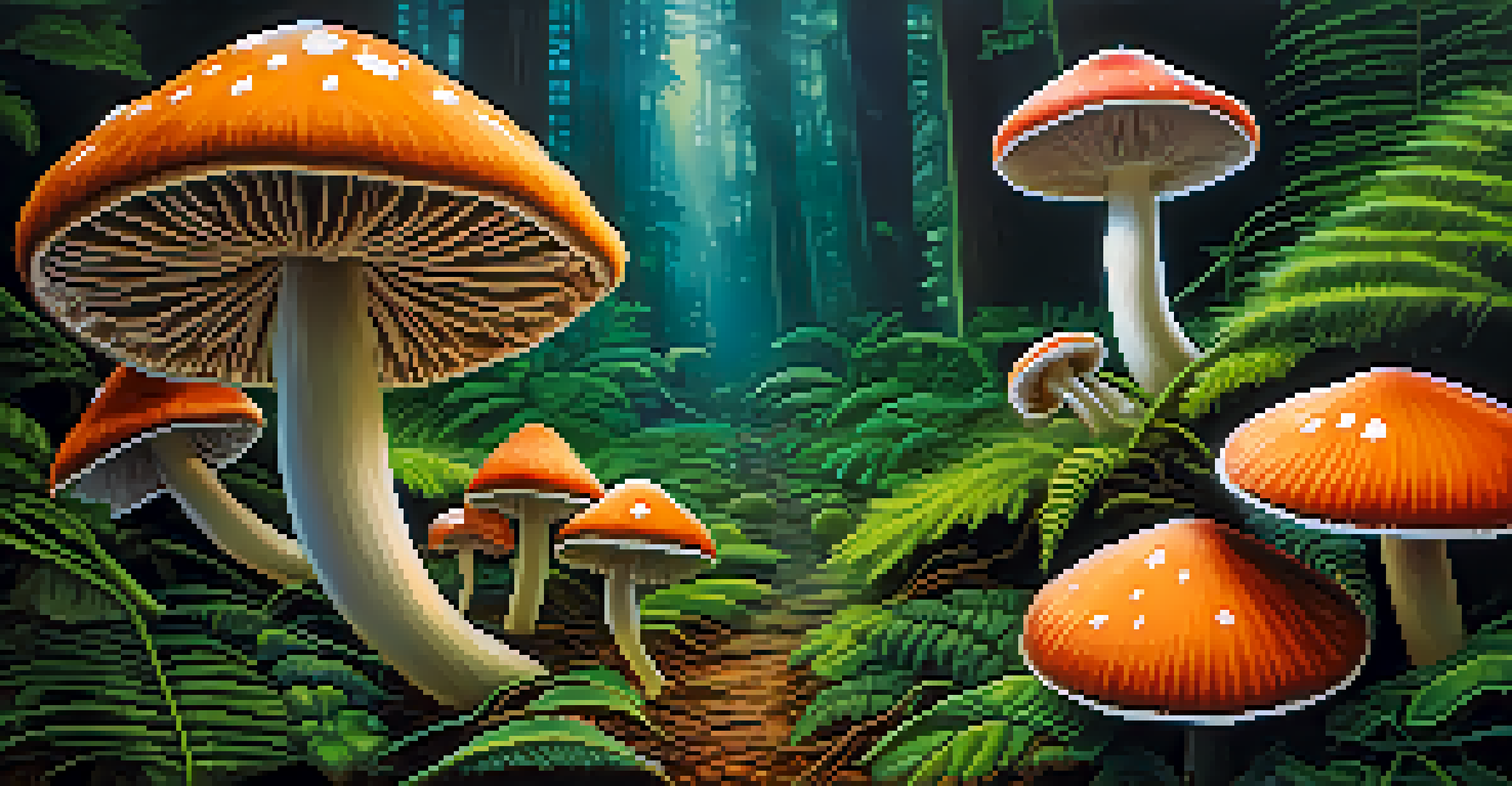The Evolution of Entheogen Regulations in the United States

Understanding Entheogens: What Are They?
Entheogens are substances that can induce altered states of consciousness, often used in spiritual or religious contexts. Examples include psilocybin mushrooms, peyote, and ayahuasca. These compounds have been utilized for centuries by various cultures for healing and spiritual exploration.
Psychedelics can help us in ways that nothing else can, and it's time to take a serious look at their potential to heal.
The term itself is derived from the Greek words 'entheos,' meaning 'full of the divine,' and 'genesthai,' meaning 'to generate.' As our society increasingly recognizes the potential benefits of these substances, understanding their historical and cultural significance becomes crucial.
As we explore the evolution of regulations surrounding entheogens, it's essential to recognize their deep roots in human history and spirituality. This background lays the groundwork for understanding the shifts in legal perspectives over time.
Early Regulations: The War on Drugs Era
The modern regulation of entheogens began in the mid-20th century, heavily influenced by the War on Drugs initiated in the 1970s. During this time, substances like LSD and psilocybin were grouped with other narcotics, leading to strict prohibitions. This classification often overlooked their historical and therapeutic uses.

In 1970, the Controlled Substances Act categorized many entheogens as Schedule I drugs, indicating they had a high potential for abuse and no accepted medical use. This strict regulation stifled research and limited access for those interested in exploring their benefits.
Entheogens and Their Cultural Roots
Entheogens have been used for centuries in spiritual contexts, highlighting their historical significance and potential therapeutic benefits.
The impact of these early regulations was profound, as they shaped public perception and created barriers for scientific inquiry into the therapeutic potential of entheogens. Understanding this context is vital as we examine the recent shifts in regulatory approaches.
Rising Interest: The 21st Century Awakening
As we moved into the 21st century, a renewed interest in mental health treatment sparked a reevaluation of entheogen regulations. Research began to emerge highlighting the therapeutic potential of substances like psilocybin for depression and PTSD. This shift was fueled by a growing understanding of the limitations of conventional treatments.
The future of medicine is not about pills, it’s about experiences. We need to explore what these substances can do for mental health.
Organizations like the Multidisciplinary Association for Psychedelic Studies (MAPS) began advocating for the responsible use and study of entheogens. Their efforts stirred public interest and encouraged dialogue around the potential benefits these substances could offer.
This awakening marked a turning point in the conversation about entheogens, signaling a need for updated regulations that reflected modern scientific understanding and cultural attitudes toward these substances.
State-Level Legalization Movements
In recent years, several states have taken the initiative to reevaluate their stance on entheogens, leading to groundbreaking legalization movements. Oregon became the first state to legalize psilocybin therapy in 2020, paving the way for other states to consider similar measures. This has sparked a broader conversation about entheogen use in therapeutic settings.
Cities like Denver and Oakland have also decriminalized the possession of psilocybin mushrooms, reflecting changing attitudes towards these substances. These local movements often emphasize community health and healing, prioritizing the needs of individuals seeking alternative therapies.
State Movements Spark Legal Change
Recent state-level legalization efforts, such as in Oregon, reflect a growing acceptance and reevaluation of entheogen regulations.
As more states explore legalization, the landscape of entheogen regulations continues to evolve, creating a complex patchwork of laws across the country. This dynamic environment presents both opportunities and challenges for advocates and users alike.
Federal Responses: A Slow Shift
While state-level movements are gaining momentum, federal responses to entheogen regulations have been slow to evolve. The Food and Drug Administration (FDA) has begun to recognize the potential benefits of entheogens, designating psilocybin as a breakthrough therapy for depression. However, this designation does not equate to full legalization or widespread access.
The federal government still maintains strict regulations on entheogens, complicating research and clinical applications. As states move forward with their own policies, this disconnect highlights the need for a more cohesive federal approach to entheogen regulation.
Despite these challenges, the growing body of research and public interest puts pressure on federal agencies to reconsider their stance. The path to more comprehensive regulations is fraught with hurdles, but the momentum is shifting.
Cultural Shifts and Public Perception
Cultural perceptions of entheogens are changing, influenced by increased media coverage and public discourse around mental health. Documentaries and books exploring the benefits of these substances have contributed to a growing acceptance. This changing narrative plays a significant role in shaping public opinion and policy.
As more people share their personal experiences with entheogens, the stigma surrounding their use is gradually diminishing. Stories of healing and transformation resonate with those seeking alternatives to traditional therapies, fostering a sense of community and support.
Federal Regulation Still Lags Behind
Despite some progress, federal responses to entheogen regulations remain slow, complicating research and access to these substances.
These cultural shifts are crucial for informing policymakers as they navigate the complexities of entheogen regulations. A more informed public can advocate for responsible use and further research, ultimately influencing legal frameworks.
The Future of Entheogen Regulations in the U.S.
The future of entheogen regulations in the United States appears to be on the brink of significant transformation. As research continues to uncover the benefits of these substances, there may be a push for more widespread legalization and acceptance. This could open doors for therapeutic practices that integrate entheogens into mental health treatment.
However, the evolving landscape also raises important questions about safety, accessibility, and ethical considerations. Ensuring that entheogens are used responsibly and equitably will be crucial as regulations adapt to new findings and societal attitudes.

Ultimately, the journey of entheogen regulations reflects a broader conversation about mental health, healing, and the role of traditional practices in modern society. As we look ahead, it will be essential to strike a balance between regulation and accessibility, fostering a responsible approach to these powerful substances.